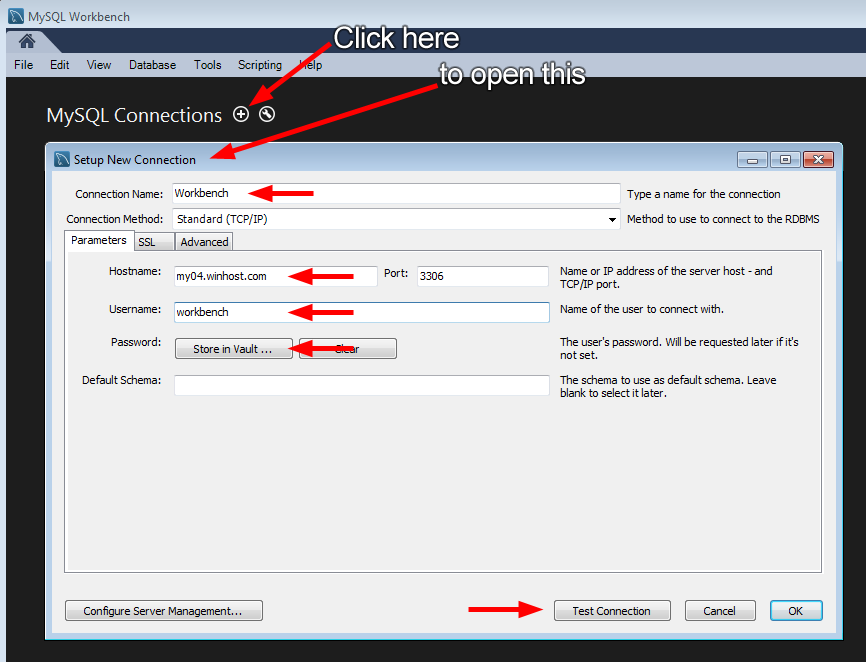Install Mysqldump Windows
Another technician recently reinstalled our mysql on our LAMP-server and now I can't use mysqldump anymore. # mysqldump The program 'mysqldump' is currently not installed. You can install it by typing: apt-get install mysql-client-5.5 So I do that: apt-get install mysql-client-5.5 Reading package lists. Done Building dependency tree Reading state information. Done You might want to run 'apt-get -f install' to correct these: The following packages have unmet dependencies: percona-server-server-5.5: Depends: percona-server-client-5.5 (= 1:5.5.36-rel34.2-648.precise) but it is not going to be installed E: Unmet dependencies. Try 'apt-get -f install' with no packages (or specify a solution).
- To install mysqldump on CentOS, Fedora or RedHat: $ sudo yum install mysql In order to generate an online snapshot for a live MySQL server, you need to prevent any update to its databases while backup is being processed.
- Dumping and Restoring MySQL databases on the Windows command prompt is a simple process. Fire up your Windows command prompt. In Windows 7, click the start orb and type cmd in the Search Programs and Files input and hit enter. Start Windows Command Prompt; If MySQL has been added to your Windows path variable, continue to step 3.
Ok I do that: apt-get -f install Reading package lists. Done Building dependency tree Reading state information.
4.5.4 mysqldump — A Database Backup Program The mysqldump client utility performs logical backups, producing a set of SQL statements that can be executed to reproduce the original database object definitions and table data.

Done Correcting dependencies. Done The following packages were automatically installed and are no longer required: libterm-readkey-perl mysql-common Use 'apt-get autoremove' to remove them.
The following extra packages will be installed: percona-server-client-5.5 The following NEW packages will be installed: percona-server-client-5.5 0 upgraded, 1 newly installed, 0 to remove and 0 not upgraded. 2 not fully installed or removed. Need to get 0 B/8,371 kB of archives. After this operation, 30.7 MB of additional disk space will be used. Do you want to continue Y/n?
This kinda sounds like it's gonna remove some mysql stuff and install another sort of database, but ok 'Y'. (Reading database. 67693 files and directories currently installed.) Unpacking percona-server-client-5.5 (from./percona-server-client-5.51%3a5.5.36-rel34.2- 648.precisei386.deb). Dpkg: error processing /var/cache/apt/archives/percona-server-client-5.51%3a5.5.36-rel34.2- 648.precisei386.deb (-unpack): trying to overwrite '/usr/bin/mysqlcheck', which is also in package mysql-client-core-5.5 5.5.35- 0ubuntu0.12.04.2 dpkg-deb: error: subprocess paste was killed by signal (Broken pipe) Errors were encountered while processing: /var/cache/apt/archives/percona-server-client-5.51%3a5.5.36-rel34.2-648.precisei386.deb E: Sub-process /usr/bin/dpkg returned an error code (1) Can anyone see what's going on here?
Install Mysqldump Windows
Is there maybe a way to manually install mysqldump? Or maybe even another way of making dump-files?
The best way to create and automate backups of MySQL databases is to: 1. Use the Windows Task Scheduler to automatically run a backup task every day or week. Have the task run a BATCH file containing the “mysqldump” and “makecab” commands to export and compress the databases. For additional recovery, use MySQL’s Binary Log files to record transactions between backup jobs (to rebuild the database to the last transaction recorded). This solution will work for everything from Windows 10, down to XP, and Server 2003.
No external tools are required. Backup MySQL Databases with Batch File Create a mysql-backup.bat file to export all the databases (or only select databases), using a DATE-TIME file-name stamp, and compress the SQL file @ECHO OFF set TIMESTAMP=%DATE:10,4%%DATE:4,2%%DATE:7,2% REM Export all databases into file C: path backup databases.yearmonthday.sql 'C: path-to mysql bin mysqldump.exe' -all-databases -result-file='C: path-to backup databases.%TIMESTAMP%.sql' -user=username -password=password REM Change working directory to the location of the DB dump file. C: CD path-to backup REM Compress DB dump file into CAB file (use 'EXPAND file.cab' to decompress). MAKECAB 'databases.%TIMESTAMP%.sql' 'databases.%TIMESTAMP%.sql.cab' REM Delete uncompressed DB dump file. DEL /q /f 'databases.%TIMESTAMP%.sql' Make sure to update all the paths used, and the MySQL’s username (root) and password (if no password is used, leave the “ -password” switch out). Why use CAB instead of ZIP?

MS-CAB files have almost 50% better compression ratios over ZIP (especially for single files), and the MAKECAB/EXPAND commands exist on all Windows versions. Scheduled MySQL Backup Task Create a Windows Task to run the above BATCH file every day or every week. Make sure that: 1.

The user has rights to Log on as a batch job. If the drive/path you are exporting to is a mapped drive, to use the UNC path. If the drive/path is a shared folder, the user the task is ran on has the correct permissions. Use MySQL Binary Log Verify that my.ini has the enabled, set to either a MIXED or ROW mode, and does not expire between backup tasks (make it 2x the frequency of the backup task schedule +1 day).
Log-bin=mysql-bin binlog-format=MIXED expirelogsdays=15 This way you can restore to the last transaction recorded by replaying the log over the last backup job. Posted on Author Categories Tags.
Yes The above mysqldump command does not work unless ' -user=username -password=password' is at the very end. This seems to be a problem when using switch “all-databases” and/or “result-file”. I’ve updated it to the correct switch order (and also made a minor edit to correct a few non-standard/ASCII dashes that made there way in somehow). For WampDeveloper Pro, you would also not include the ' -password=' switch, since root has no password set by default (. root is secured to local network access only).